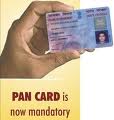Withdrawals from GPF
Withdrawals of PF amount for the following purposes:
1.Education
2.Purchasing Consumer Durables
3.Illness
4.Obligatory Expenses
5.Purchasing a house site
6.Constructing
7.Reconstructing
8.Housing
9.Renovating ancestral house
10.Repayment of outstanding housing loan
11.Extensive repairs / overhauling of motor car
12.Purchase of motor car/motor cycle /scooter, etc or for repaying government loan already taken for the purpose
13.Making deposit to book a motor car/motor cycle / scooter moped, etc
14.Once in a financial year towards subscription paid for the Grv,, Insurance Scheme.
15.Charges for conversion from leasehold to freehold of property allotted / transferred by Delhi Development Authority / State Housing Boards / House Building Co-operative Societies
16.Without assigning any reason.— Rule 15 (1) (Q)
Limits:
1. Items 1 to 4—
(a) Normally, one half of the amount at credit or six months' pay plus DP, whichever is less;
(b) Up to three-fourths of the amount at credit at the discretion of the sanctioning authority.— Rule 16(1).
2. Items 5 to 10—
(a) Up to 90% of balance at credit;
(b) The amount of withdrawal plus the Government loan already taken should not exceed the limits prescribed under the HBA Rules — Rule 16(1) and Proviso.
3. For Item 11, one-third of the amount at credit or the actual amount of repairing / overhauling, or Rs. 10,000, whichever is the least.— Rule 15, GID(2).
4. For Item 12, Rs. 1,10,000 for motor car and Rs. 20,000 for motor cycle / scooter / moped, etc., but the amount of withdrawal (plus withdrawal if any, availed for booking) should not exceed 50% of the amount at credit on the date of application for withdrawal for purchase, or the actual price of the vehicle, whichever is less.— Rule 15, GID (1).
5. For Item 13, fifty per cent of the amount at credit or Rs. 22,000 in the case of car and Rs. 4,000 in the case of motor cycle, scooter, etc., or actual amount of registration, whichever is less. This amount will be taken into account for determining the overall ceiling of Rs. 1,10,000 for car and Rs. 20,000 for motor cycle / scooter, etc.— Rule 15, GID (3).
6. For Item 14, an amount equivalent to one year's subscription paid toward5 the Group Insurance Scheme.— Rule 15(1) (D).
7. For Items 15 and 16, up to 90% of balance at credit only once during service.— Rule 15, GID (6) and Proviso 3, Rule 16 (1).
Eligibility:
1. For Items 1 to 4 : After completion of 15 years of service (including broken periods) or within ten years before the date of superannuation, whichever is earlier.— Rule 15 (1) (A).
2. For Items 5 to 10: Any time during the service.— Rule 15 (1) (B).
3. For Item 11: After completion of 28 years of service or less than 3 years before retirement.— Rule 15, GID (2).
4. For Items 12 and 13: After completion of 15 years of service or within five years before superannuation. In special cases, the Secretary of the Ministry / Department may sanction refundable advance to officials who fall short of the minimum service of 15 years by not more than 6 months. After completion of 15 years of service, the outstanding advance may be converted into final withdrawal. The basic pay plus DP (including NPA, if any) of the official should be Rs. 15,750 or more in the case of car and Rs. 6,900 or above in the case of scooter / motor cycle, etc.— Rule 15, GIDs (1), (3) and OM, dated 8-10-2004. (Revisedpay limits based on Sixth Pay Commission's pay scales awaited.)
5. For Item 14: All officials admitted to the Group Insurance Scheme. However, withdrawal is permitted if only at any stage the position of a subscriber does not permit him to subscribe to the Group Insurance and GPF / CPF at the same time.— Rule 15 (1) (D) readwith Para. 10.1. o fCGEGIS, 1980.
6. For Item 15: All officials.
7. For Item 16: Those due for retirement on superannuation within a year.
NOTE 1.— Only one withdrawal can be allowed for the same purpose. Marriage or education of different children or illness on different occasions or a further addition / alteration to a house / flat covered by a fresh plan — these are treated as for different purposes.—- Rule 15(1), Note 5.
NOTE 2.— Betrothal and Marriage are treated as separate purposes.— Rule 16, GID (2).
NOTE 3.— Both advance and withdrawal should not be sanctioned for one and the same purpose at the same time.— Rule 15(1), Note 6.
Sanctioning Authority.— Authority competent to sanction advance for special reasons as in Fifth Schedule.
Conversion of advance into withdrawal.— A subscriber may have the balance outstanding against an advance sanctioned to him converted into final withdrawal on his satisfying the conditions laid down for such withdrawal.— Rule 16-A.
